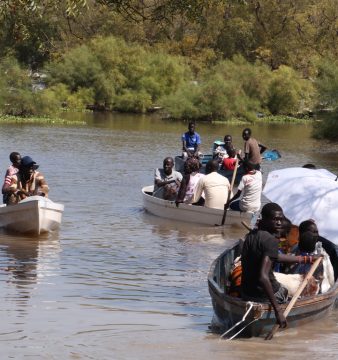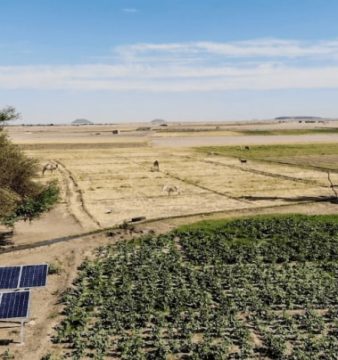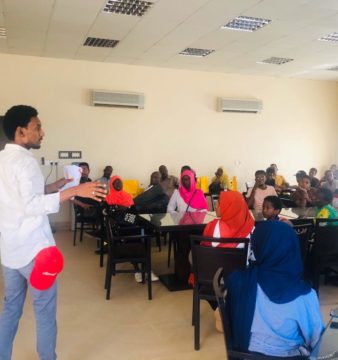Climate Education in Sudan: An Unattainable Dream
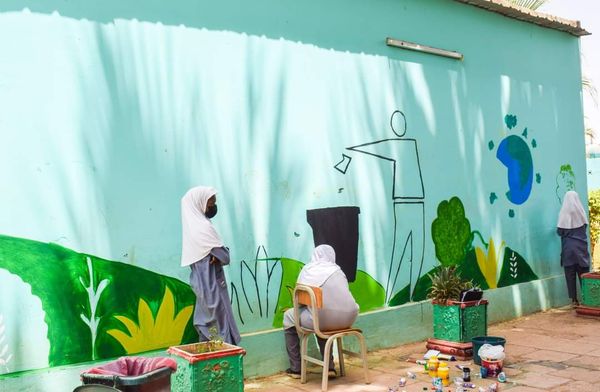
Today marks 10 months since war began in Sudan, more than 7.4 million people – about 15% of the total population of the country – have fled their homes since the war began on 15 April 2023. They have sought refuge within Sudan or in neighbouring countries, making Sudan the largest displacement crisis in the world with the largest child displacement crisis in the world.
Six months after the war, UNICEF estimated that almost 19 million children were out of school. On 27 December 2023, 3.5 million children fled Sudan in search of basic necessities (safety, food, shelter, and healthcare), in addition to the existing 13.5 million children across Sudan who require humanitarian support, according to the United Nations Office for the Coordination of Humanitarian Affairs (OCHA).
Climate advocacy and education has always been looked at as a luxury in Sudan. A multitude of individuals in Sudan see environmental activists as intellectual individuals as privileged members of society who have the time, money, and social status to be able to focus on such a minor problem as the ‘Claimed Risks of Climate Change’. This assumption implies that Sudanese individuals are ignorant of the fact that they are living among the most vulnerable continent to climate change, Africa. In 2021, the African Union Peace and Security Council (AU PSC) underscored the profound impact of climate change on peace, security, and stability in the region. Specifically, Sudan has been recognised as a hotspot for these effects.
Between 2016 and 2021, Sudan witnessed a surge in severe weather events, including droughts, storms, heavy rains, and floods, posing an increasing threat to communities. By early 2020, 9.3 million Sudanese needed humanitarian aid, with 6.2 million experiencing food insecurity and 3.3 million grappling with malnutrition. The cumulative effects of droughts, floods, insecurity, and widespread poverty have displaced over 3 million individuals. Additionally, by mid-2020, 70,000 vulnerable families (approximately 355,000 individuals) urgently required emergency assistance to recover from severe flooding that ravaged livestock and crops on their farms.
On 24 January 2024, the UN observed the sixth International Day of Education under the theme, ‘Learning for Lasting Peace’. That theme could not resonate more with what is happening in Sudan right now. ‘In the face of escalating climate change, democratic erosion, persistent inequalities, growing discrimination, hate speech, violence, and conflict on a global scale, education emerges as a powerful tool to both address and prevent these challenges in the future. Moreover, when effectively shaped and implemented, education becomes a long-term investment with increasing returns,’ said the UN in a statement.
How can children possess that tool while they are being hammered by the toll of war, in addition to the impacts of climate change, arguably the most pressing global issue climate change – from the increasingly shifting weather to the continuous family displacement as a resort to lift the burden of these impacts.
Sudanese children are now between a rock and hard place. They are deprived of their basic rights to live, survive, and develop along with their right to be educated, including the crucial need to be educated about what they are facing as a consequence of climate change. That being the case, climate education in Sudan has now become an unattainable dream for all 21 million Sudanese children in the country.
Sudan’s initiatives to implement climate education did not begin with the establishment of the Supreme Council for Environment and Natural Resources, the first environmental governmental body, in 1991. Its roots can be traced back to the founding of the Sudanese Environment Conservation Society in 1975. However, what followed was a rough ride filled with obstacles in establishing a framework for climate education in Sudan.
Teaching and learning concepts related to climate change and its causes, impacts, and mitigation strategies are the sole purposes of climate education. This is the only way to enhance awareness and develop sustainable practices. Climate education is more than climate change literacy; it gives people the right to understand what is happening around them, and how they can cope or work to enhance their chances of living a better life.
Although Sudan is at a standstill due to the ongoing war, it is time to sharpen our skills to provide better and higher-quality climate education for Sudanese and African children, in general. We need to help them understand their vulnerabilities and source of power, which is their pure and utmost-given land. Furthermore, as Sudanese environmentalists and climate educators, we need to develop a solid approach to navigating the unfortunate socioeconomic context of Sudan, which turns basic education into affluence. We need to enforce the belief that climate education for children is not a luxury or extracurricular activity, but an absolute necessity. The absence of it simply deprives them of their right to advocate and work for their future because we fight this fight today to preserve their right to inherit a world free from the burdens of climate catastrophe.
______________________________________________________________________________________________
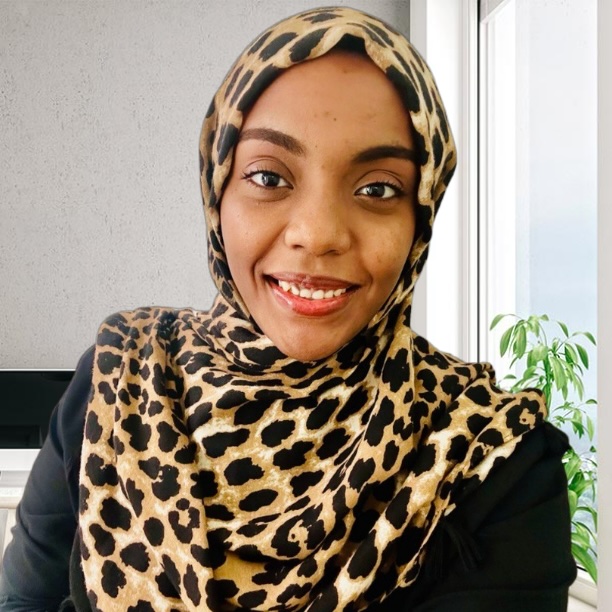
Nesreen Ahmed, a climate educator leader and environmental specialist, has over seven years of experience leading environmental projects in both private and governmental sectors. Fellow of the Climate Education Leadership Africa. Passionate about empowering communities in the climate change fight realm, my motto is ‘three Es, Pave the way to a better future; Educate, Enlighten, Empower’.


